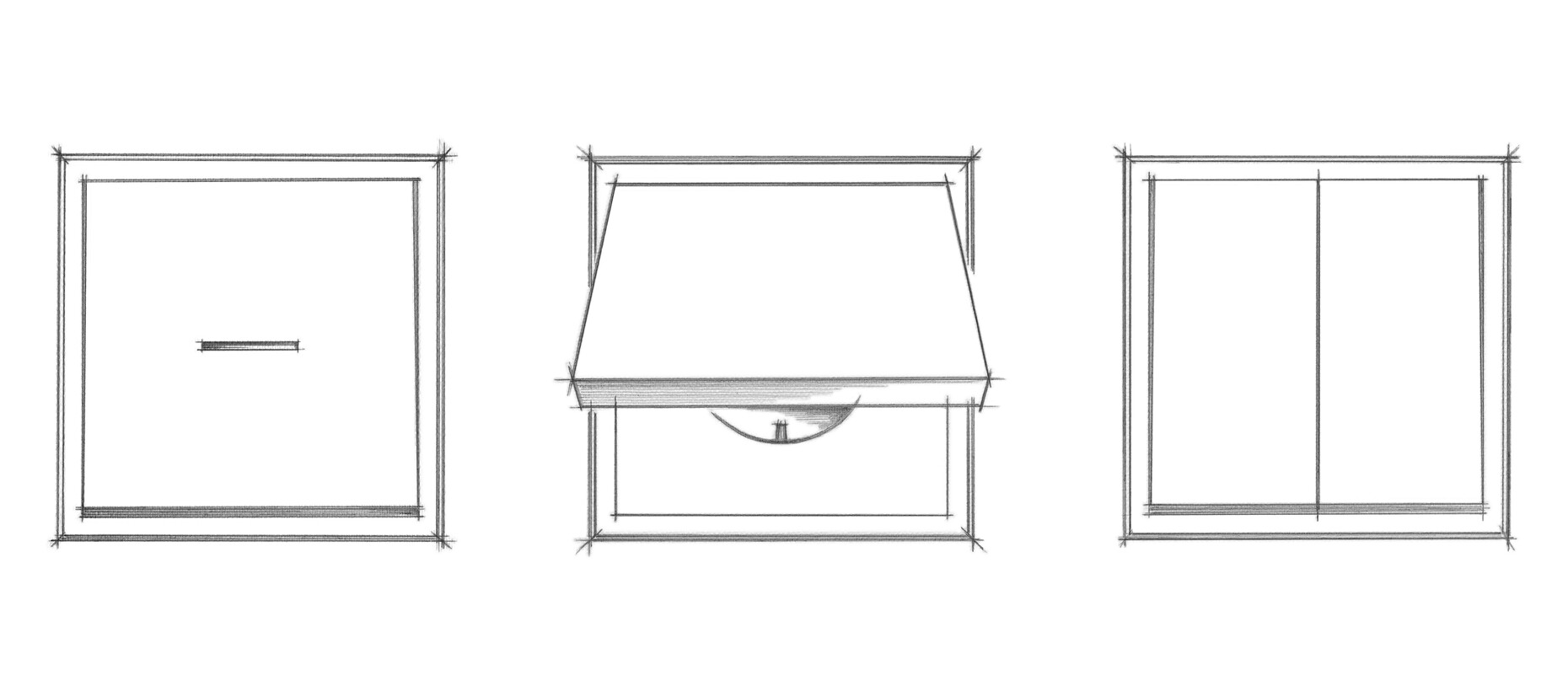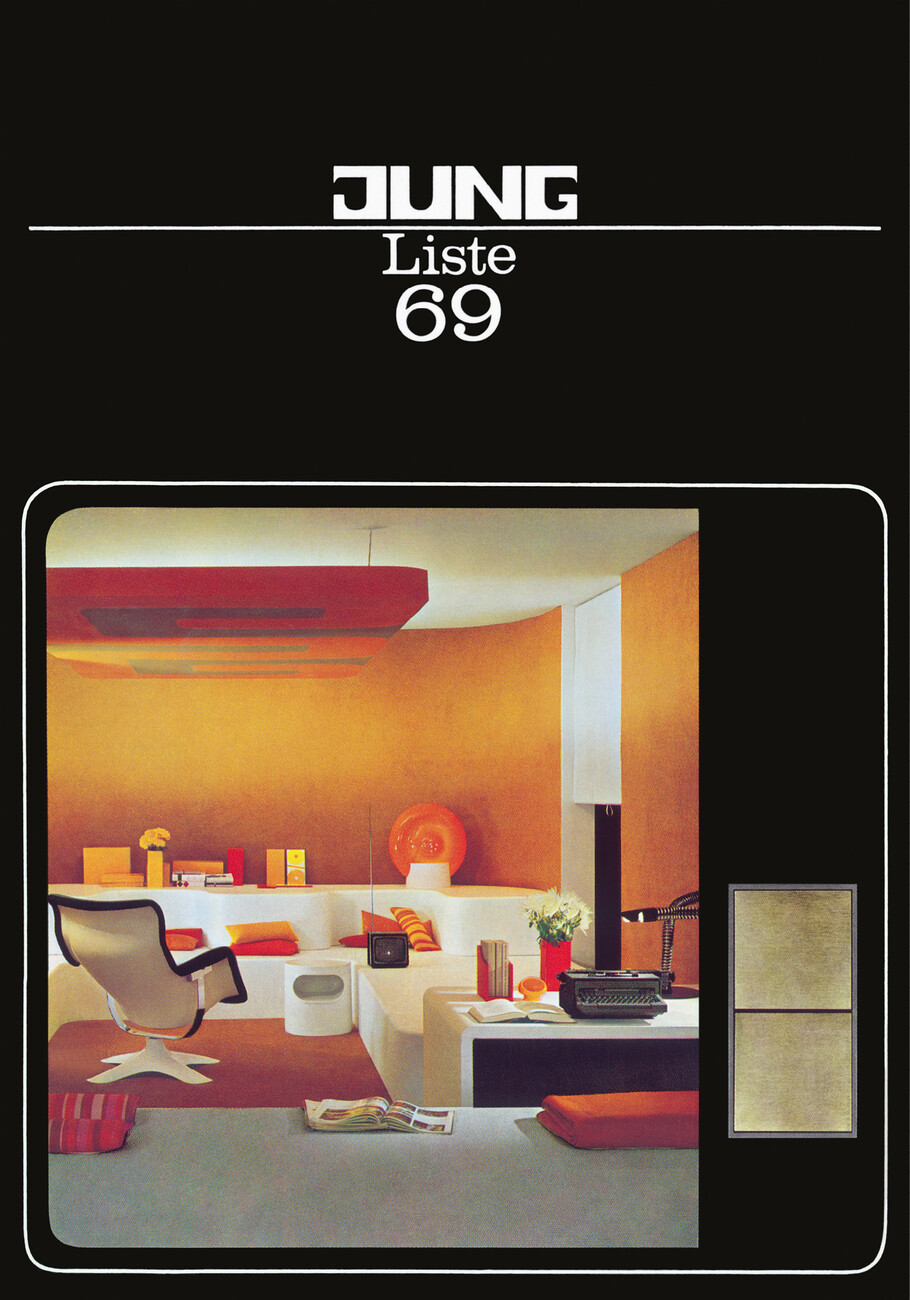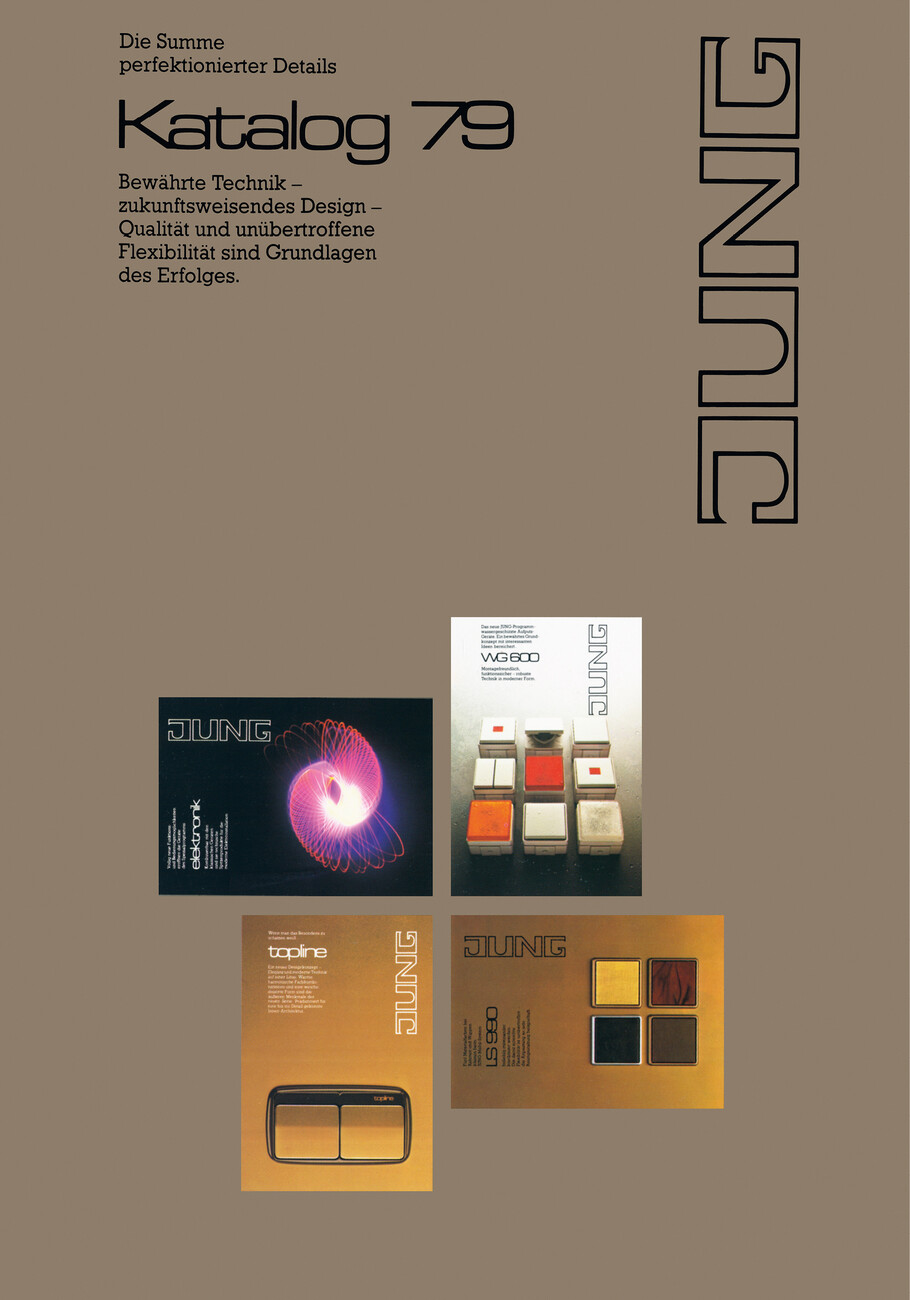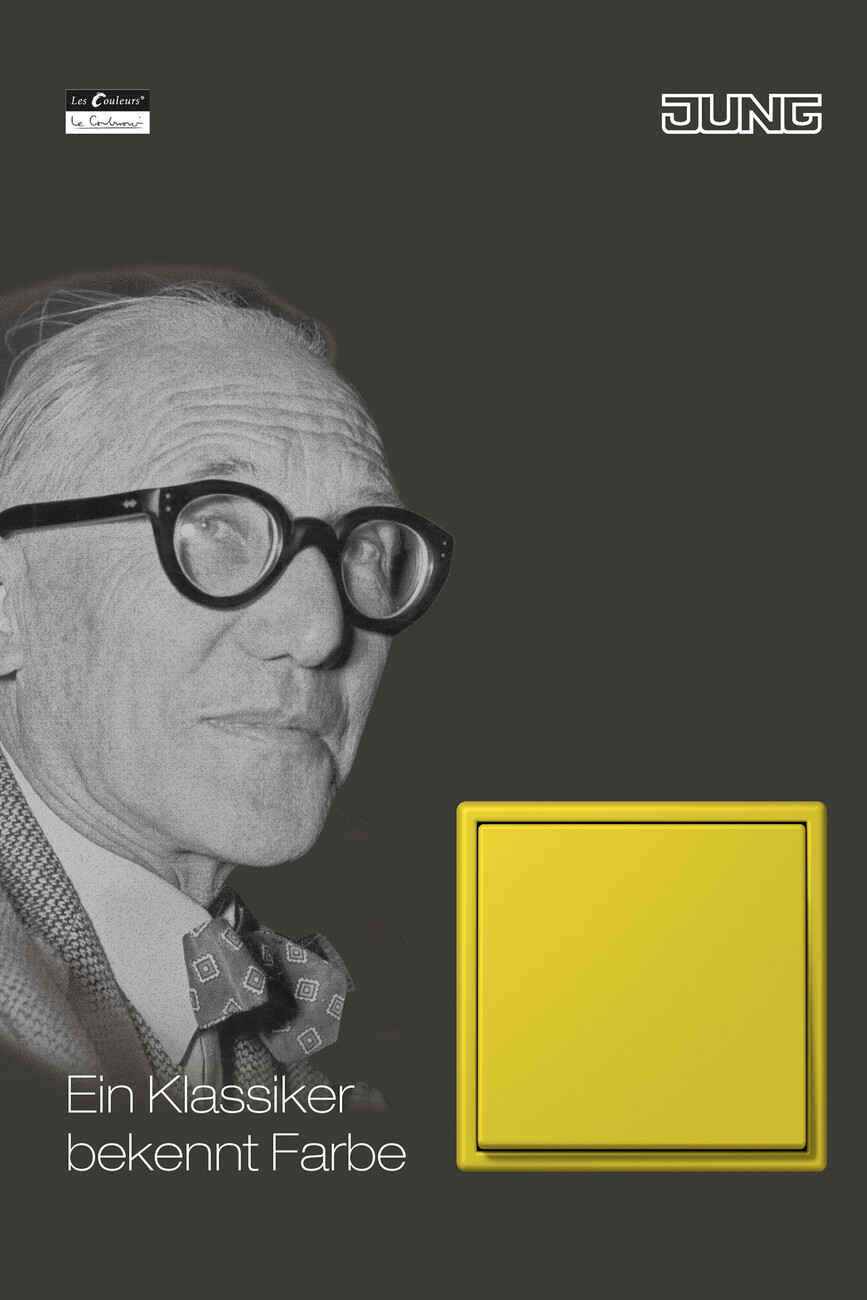On the buzzer
A rotary movement – for a long time, that was what you needed to do in order to light up a room or turn off the lights. Thus opening or closing a valve, the burner of petrol or gas lamps would be either fed with or deprived of fuel, turning the light on or off. The switches making their way into homes when electricity was first introduced around 1900 were also rotary switches. While the round switch box started off by being mounted on the wall, it would soon make its way underneath the plaster. A ring-shaped frame prevented the wallpaper from getting dirty when the switch was turned. When flip switches replaced rotary switches, the frame remained round just the same. The shape had simply become established as the one used for light switches. The flip switch itself was fairly small in comparison to the frame – just big enough to operate it with one’s fingertip.
This was the status quo graphic designer Herbert W. Richter faced when Siegfried Jung commissioned him with designing a new switch range for his company. With the series LS 990 Richter went on to create a classic of German industrial design that remains popular to this day. In so doing he followed the rules Deutscher Werkbund and Bauhaus had formulated for good product design. He jettisoned outmoded aspects such as the round shape and developed a switch of similar size to the earlier frame. A large square shape now replaced the small rocker switch. What remained of the former large frame was just a thin edge. Richter consistently enlarged the switch to the largest technical dimensions of 7 x 7 cm, which the model LS 990 still uses to date. What has changed down through the decades are the colors and materials. The leather and marble looks of the 1970s and 1980s have long since disappeared. Instead, the program has since been expanded to include various grey and black hues. Since 1990 the LS 990 has also been available in metal versions: In high-grade steel to begin with, then also in aluminum, brass, chrome-plated and even gilded. Since 2014, the program is also offered in a color range devised by Le Corbusier in the mid-20th century – a rendezvous of two classics that have both shown how wonderfully function and aesthetics complement each other. (fap)
















